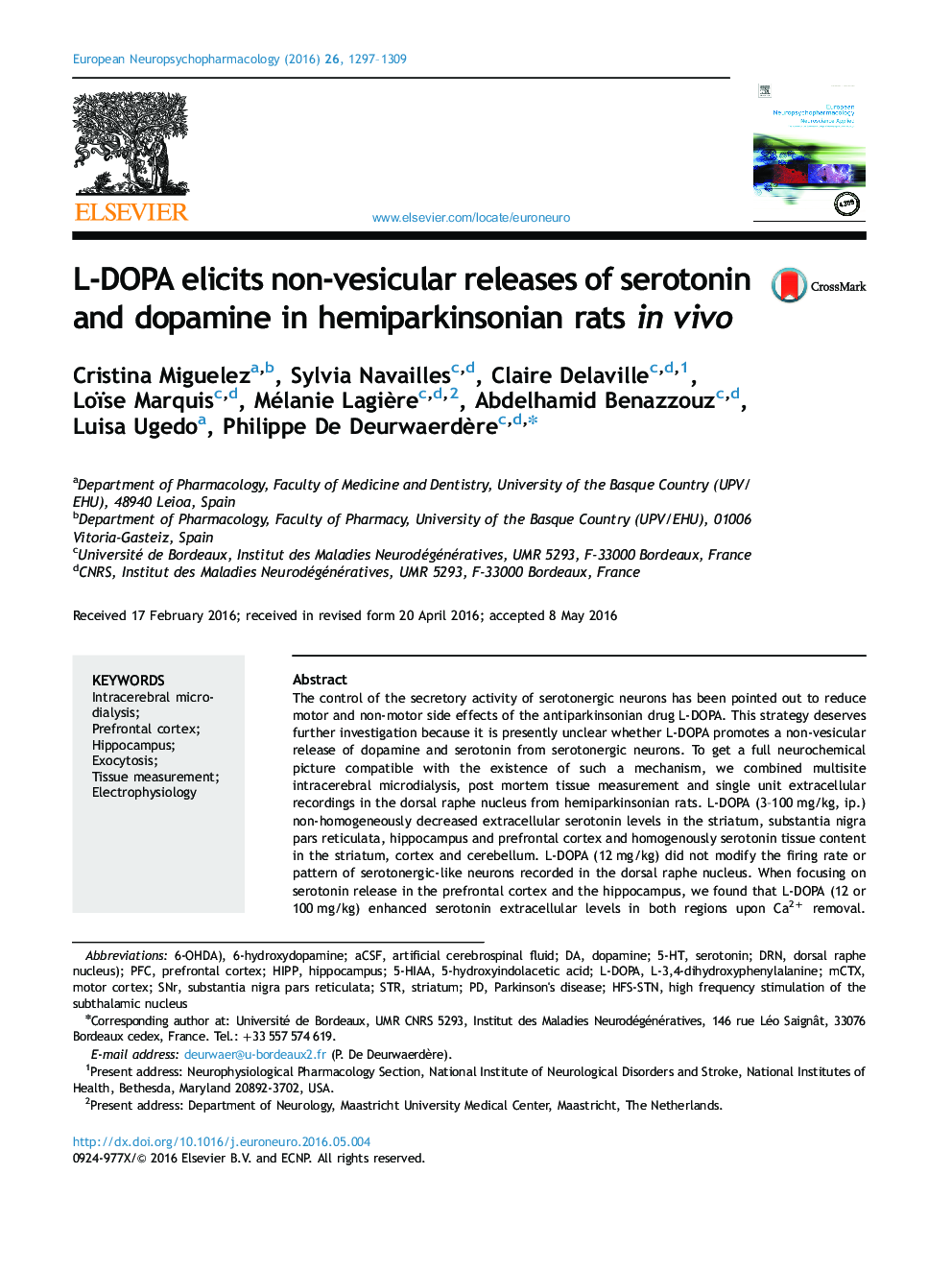| Article ID | Journal | Published Year | Pages | File Type |
|---|---|---|---|---|
| 318693 | European Neuropsychopharmacology | 2016 | 13 Pages |
The control of the secretory activity of serotonergic neurons has been pointed out to reduce motor and non-motor side effects of the antiparkinsonian drug L-DOPA. This strategy deserves further investigation because it is presently unclear whether L-DOPA promotes a non-vesicular release of dopamine and serotonin from serotonergic neurons. To get a full neurochemical picture compatible with the existence of such a mechanism, we combined multisite intracerebral microdialysis, post mortem tissue measurement and single unit extracellular recordings in the dorsal raphe nucleus from hemiparkinsonian rats. L-DOPA (3–100 mg/kg, ip.) non-homogeneously decreased extracellular serotonin levels in the striatum, substantia nigra pars reticulata, hippocampus and prefrontal cortex and homogenously serotonin tissue content in the striatum, cortex and cerebellum. L-DOPA (12 mg/kg) did not modify the firing rate or pattern of serotonergic-like neurons recorded in the dorsal raphe nucleus. When focusing on serotonin release in the prefrontal cortex and the hippocampus, we found that L-DOPA (12 or 100 mg/kg) enhanced serotonin extracellular levels in both regions upon Ca2+ removal. Concomitantly, L-DOPA-stimulated dopamine release partly persisted in the absence of Ca2+ in a region-dependent manner. Local application of the serotonin reuptake inhibitor citalopram (1 µM) blunted the responses to L-DOPA (3–12 mg/kg), measured as extracellular dopamine levels, most prominently in the hippocampus. These data stress that L-DOPA, already at low to moderate doses, promotes non-vesicular releases of serotonin and dopamine in a region-dependent manner.
